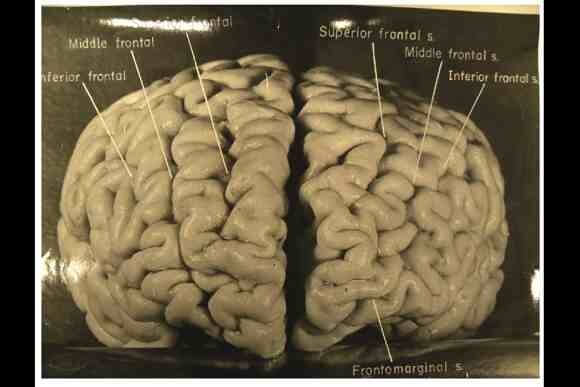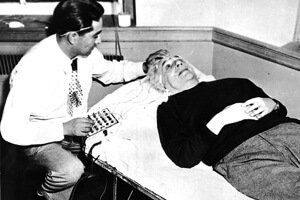
Thanks to work of pathologist Thomas Harvey to preserve Albert Eisntein’s brain decades ago, we can continue to busy ourselves today with trying to figure out what made Albert Einstein so smart. Knowing the world would want to scrutinize the brain of one of the most brilliant persons to ever live, Harvey took photographs of the brain then cut it into tissue slices which he mounted onto slides and distributed to some of the world’s most prominent neuropathologists who hoped to find an anatomical clue as to how Einstein achieved his startling genius.
The initial analyses didn’t turn up much, except for the fact that Einstein’s brain, counterintuitively, was actually smaller than average. And early tissue studies showed the normal hallmarks of aging, biomarkers that were expected for someone who lived to the age of 76. So Harvey put the brain fragments in a formalin-filled jar, stuck the jar inside a cider box and kept the box under a beer cooler in his office.
The fabled brain was pulled out decades later, when, in 1985 a study showed that two parts of Einstein’s brain contained higher amounts of glia, the cells that surround and support neurons. And another study published in the nineties concluded that a groove was missing in one part of the cortex. What was interesting was the area missing the groove is thought to process visuo-spacial information and be important for mathematical skills. The scientists speculated that the missing groove might have enhanced neuronal connections, partially explaining why Einstein’s visuo-spatial and mathematical skills were mindbogglingly enhanced.

Is the key to Einstein’s genius in the folds and grooves of his brain, or did he just do more with what he had?
Now more scientists are revisiting the six decades long curiosity. Dean Falk and her fellow anthropologists at Florida State University in Tallahassee analyzed 14 of Harvey’s original photographs that had only recently been found. Some of the photographs were taken at angles not seen in photos previously studied, offering new views of Einstein’s brain. They compared his brain anatomy to that of 85 brains which had been previously described in two other studies. They found that Einstein’s prefrontal cortex was “highly convoluted” compared to the average amount of convolutions observed in the other brains. The prefrontal cortex is important in higher level, abstract thought. It’s possible that the increased number of folds and fissures in Einstein’s prefrontal cortex contributed to his ability to carry out his famous thought experiments, such as imagining himself traveling alongside a beam of light.
The photos also showed a part of Einstein’s right somatosensory cortex was enlarged. The area, which processes sensory information from the left hand, is thought to have overdeveloped due to his extensive violin playing.
Humans, the most intelligent species on the planet, owe their acumen to the evolutionary enlargement of the brain as well as the coincident reorganization of the brain’s connections occurring over time. Regarding intelligence, the most important reorganization is generally accepted to be the increased specialization of the neocortex, the part of the brain responsible for carrying out higher brain functions. One has to wonder, though, about the true power of nature over nurture. Does the secret to Einstein’s genius really lie in the folds and fissures of his brain? Did his extra-specialized prefrontal cortex really give us the special theory of relativity? Currently we cannot definitively answer these questions, but it’s certainly fun to try.